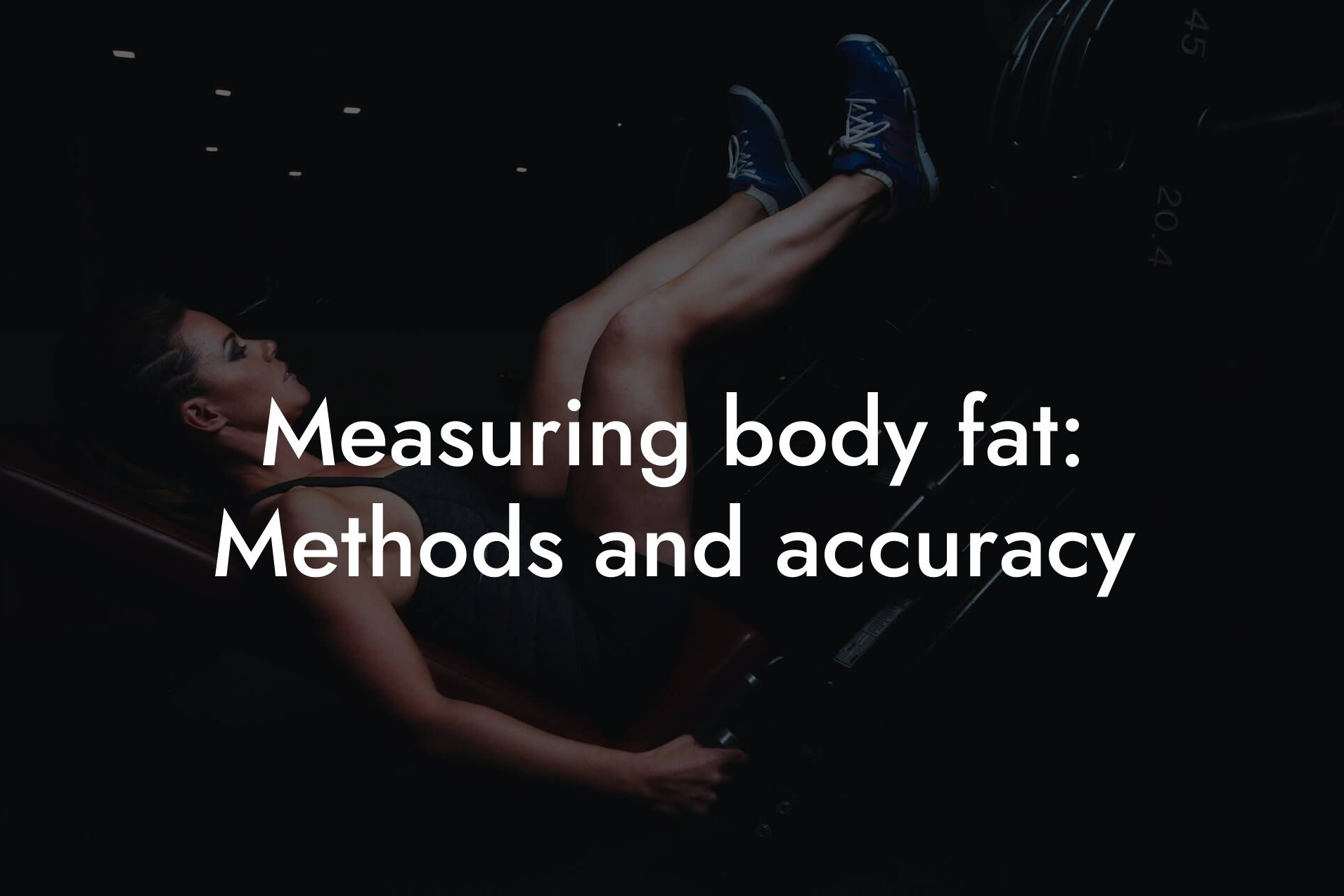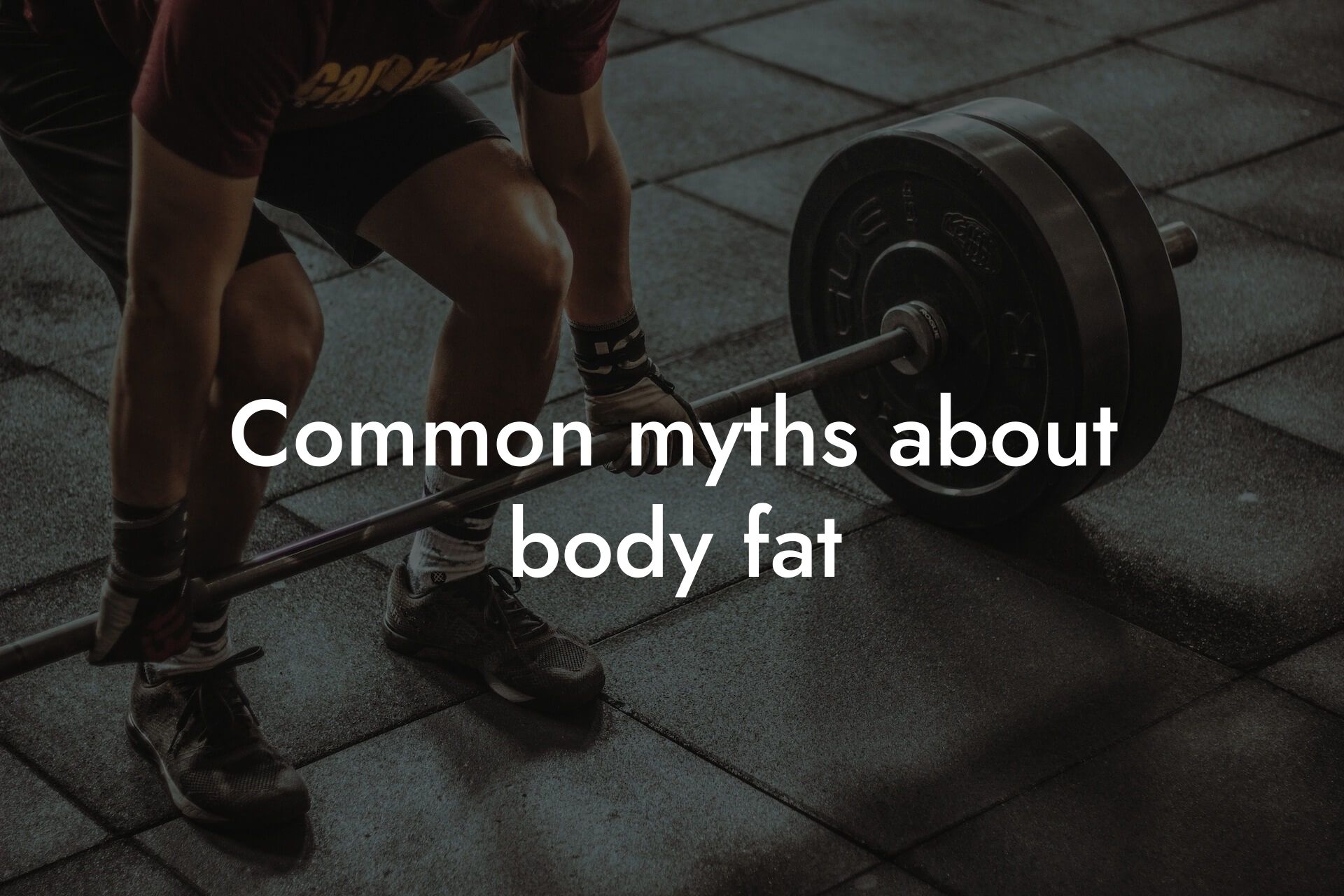As a high-earning professional, taking care of your physical appearance and overall health is crucial for success. One important aspect of this is understanding your body fat percentage, which can have a significant impact on your overall health and wellbeing. At Tano Performance Group, we use state-of-the-art DEXA machine technology to provide our clients with a comprehensive body assessment, giving them the insights they need to take their business and personal lives to the next level. In this article, we'll delve into the importance of body fat percentage, how it changes with age and gender, and what you can do to maintain a healthy body fat percentage.
Table of Contents
What is Body Fat Percentage?
Body fat percentage is the percentage of your body weight that is composed of fat. It's an important indicator of overall health, as excess body fat can increase the risk of chronic diseases such as diabetes, heart disease, and certain types of cancer. Body fat percentage is typically categorized into several ranges, including:
- Essential fat: 10-13% for men, 16-23% for women (necessary for bodily functions)
- Athlete: 6-13% for men, 16-23% for women (for athletes who require a high level of physical fitness)
- Fitness: 14-17% for men, 24-30% for women (for individuals who are physically active and have a good level of fitness)
- Average: 18-24% for men, 31-36% for women (for individuals with a average level of physical activity)
- Obese: 25% or higher for men, 37% or higher for women (for individuals who are significantly overweight)
How Does Body Fat Percentage Change with Age?
Body fat percentage tends to increase with age, particularly after the age of 30. This is due to a combination of factors, including:
- Hormonal changes: Decreases in hormone levels, such as testosterone and estrogen, can lead to increased body fat
- Metabolic slowdown: As we age, our metabolism slows down, making it easier to gain weight and harder to lose it
- Lifestyle changes: Many people become less active with age, leading to increased body fat
- Genetics: Genetic factors can also play a role in body fat percentage increases with age
How Does Body Fat Percentage Differ by Gender?
Body fat percentage differs significantly between men and women. Generally, women tend to have a higher body fat percentage than men, due to:
- Hormonal differences: Women have higher levels of estrogen, which can lead to increased body fat
- Reproductive functions: Women require a certain amount of body fat to support reproductive functions, such as menstruation and childbirth
- Body composition: Women tend to have a higher percentage of body fat in the hips, thighs, and buttocks, compared to men
What is a Healthy Body Fat Percentage for Men?
For men, a healthy body fat percentage is typically considered to be between 8-19%. However, this can vary depending on age and other factors. Here are some general guidelines for men:
- 20-29 years old: 8-12%
- 30-39 years old: 11-15%
- 40-49 years old: 13-17%
- 50 years and older: 15-19%
What is a Healthy Body Fat Percentage for Women?
For women, a healthy body fat percentage is typically considered to be between 21-33%. Again, this can vary depending on age and other factors. Here are some general guidelines for women:
- 20-29 years old: 21-24%
- 30-39 years old: 24-27%
- 40-49 years old: 27-30%
- 50 years and older: 30-33%
How to Maintain a Healthy Body Fat Percentage
Maintaining a healthy body fat percentage requires a combination of a balanced diet, regular exercise, and a healthy lifestyle. Here are some tips to help you achieve and maintain a healthy body fat percentage:
- Eat a balanced diet: Focus on whole, nutrient-dense foods, including fruits, vegetables, lean proteins, and whole grains
- Exercise regularly: Aim for at least 150 minutes of moderate-intensity exercise or 75 minutes of vigorous-intensity exercise per week
- Strength train: Incorporate strength training exercises into your routine to build muscle mass and boost metabolism
- Get enough sleep: Aim for 7-9 hours of sleep per night to help regulate hormones and metabolism
- Manage stress: Find healthy ways to manage stress, such as meditation, yoga, or deep breathing exercises
Understanding your body fat percentage is an important aspect of maintaining overall health and wellbeing. By knowing your body fat percentage and taking steps to maintain a healthy range, you can reduce your risk of chronic diseases, improve your physical appearance, and take your business and personal life to the next level. At Tano Performance Group, we're committed to helping high-earning professionals like you achieve their health and fitness goals through our comprehensive body assessment services. Contact us today to learn more about how we can help you achieve your goals.
Frequently Asked Questions
What is a healthy body fat percentage?
A healthy body fat percentage varies depending on age and gender. Generally, for men, a body fat percentage of 8-19% is considered healthy, while for women, it's 21-33%. However, these ranges can vary depending on individual factors such as athletic goals, muscle mass, and overall health.
How does body fat percentage change with age?
Body fat percentage tends to increase with age, especially after the age of 30. This is due to a combination of factors, including hormonal changes, decreased muscle mass, and a slower metabolism. On average, men tend to gain 1-2% body fat per decade, while women tend to gain 1.5-3% per decade.
What is the ideal body fat percentage for athletes?
The ideal body fat percentage for athletes varies depending on the sport and position. For example, endurance athletes such as distance runners may aim for a body fat percentage of 6-13%, while strength athletes such as weightlifters may aim for a body fat percentage of 10-18%. It's essential to find a balance between maintaining a healthy body fat percentage and achieving optimal performance.
How does body fat percentage affect overall health?
Excess body fat is linked to various health risks, including obesity, diabetes, cardiovascular disease, and certain types of cancer. Maintaining a healthy body fat percentage can reduce the risk of these conditions and improve overall health and well-being.
What is the difference between body fat percentage and BMI?
Body fat percentage and BMI (Body Mass Index) are related but distinct measures. BMI is a calculation based on height and weight, while body fat percentage is a measurement of the percentage of body fat. BMI can be misleading, as it doesn't account for muscle mass or body composition, whereas body fat percentage provides a more accurate picture of body fat levels.
How do I measure my body fat percentage?
There are several ways to measure body fat percentage, including dual-energy X-ray absorptiometry (DXA), hydrostatic weighing, skinfold measurements, and bioelectrical impedance analysis (BIA). DXA is considered one of the most accurate methods, but it may not be readily available to the general public. Consult with a healthcare professional or registered dietitian to determine the best method for you.
What is the average body fat percentage for men?
The average body fat percentage for men varies depending on age. For men in their 20s, the average body fat percentage is around 12-15%. For men in their 30s, it's around 15-18%, and for men in their 40s, it's around 18-20%.
What is the average body fat percentage for women?
The average body fat percentage for women varies depending on age. For women in their 20s, the average body fat percentage is around 25-28%. For women in their 30s, it's around 28-30%, and for women in their 40s, it's around 30-32%.
How does body fat percentage affect bone density?
Body fat percentage can have both positive and negative effects on bone density. Excess body fat can put additional stress on joints, leading to bone loss and osteoporosis. On the other hand, having some body fat can provide cushioning and support for joints, promoting healthy bone density. Maintaining a healthy body fat percentage is essential for optimal bone health.
Can I have too little body fat?
Yes, it is possible to have too little body fat. This can lead to a range of health problems, including fatigue, decreased immune function, and poor wound healing. Athletes, in particular, may be at risk of having too little body fat, which can negatively impact performance and overall health.
How does body fat percentage affect physique?
Body fat percentage has a significant impact on physique. A lower body fat percentage can reveal more muscle definition, while a higher body fat percentage can obscure muscle mass. Maintaining a healthy body fat percentage can improve overall physique and boost confidence.
What are the risks of having high body fat percentage?
Having a high body fat percentage is linked to various health risks, including obesity, type 2 diabetes, cardiovascular disease, and certain types of cancer. It can also negatively impact mental health, self-esteem, and overall quality of life.
How can I reduce my body fat percentage?
Reducing body fat percentage requires a combination of healthy diet, regular exercise, and lifestyle changes. Focus on whole, nutrient-dense foods, incorporate strength training and high-intensity interval training (HIIT) into your workout routine, and prioritize stress management and adequate sleep.
What is the role of genetics in body fat percentage?
Genetics play a significant role in body fat percentage, as they can influence factors such as metabolism, appetite, and body composition. However, genetics are not the sole determinant of body fat percentage, and lifestyle choices can still have a significant impact.
How does body fat percentage affect mental health?
Body fat percentage can have a profound impact on mental health, particularly in regards to self-esteem and body image. Maintaining a healthy body fat percentage can improve confidence and overall mental well-being, while excess body fat can contribute to feelings of low self-worth and depression.
Can I achieve a body fat percentage of 0?
It is not possible or healthy to achieve a body fat percentage of 0. Essential body fat is necessary for various bodily functions, including hormone regulation, insulation, and energy storage. Aiming for a healthy body fat percentage, rather than an unrealistic goal of 0%, is a more sustainable and healthy approach.
How often should I measure my body fat percentage?
It's recommended to measure your body fat percentage regularly, ideally every 4-6 weeks, to track progress and make adjustments to your diet and exercise routine as needed. Consult with a healthcare professional or registered dietitian to determine the best measurement schedule for you.
What is the difference between visceral fat and subcutaneous fat?
Visceral fat is fat that accumulates around internal organs, while subcutaneous fat is fat that accumulates just beneath the skin. Visceral fat is considered a more significant health risk, as it can increase the risk of chronic diseases such as cardiovascular disease and type 2 diabetes.
How does body fat percentage affect athletic performance?
Body fat percentage can significantly impact athletic performance, particularly in sports that require speed, agility, and endurance. Maintaining a healthy body fat percentage can improve power-to-weight ratio, reduce injury risk, and enhance overall athletic performance.
Can I achieve a healthy body fat percentage through diet alone?
While diet plays a significant role in achieving a healthy body fat percentage, it is unlikely to achieve a healthy body fat percentage through diet alone. Regular exercise, particularly strength training and HIIT, is essential for building and maintaining muscle mass, which is critical for achieving a healthy body fat percentage.
How does body fat percentage affect overall quality of life?
Maintaining a healthy body fat percentage can have a profound impact on overall quality of life, including improved physical function, enhanced mental health, and increased confidence and self-esteem. It can also reduce the risk of chronic diseases, improve sleep quality, and increase energy levels.
Here are some related articles you might love...
- Measuring body fat: Methods and accuracy
- Ideal body fat percentage for professionals
- Common myths about body fat
- How body fat impacts overall health
- Body fat distribution: What it means for your health
- How to lower body fat percentage safely
- Body fat vs muscle mass: What matters more?
- The relationship between body fat and productivity
- The role of diet in managing body fat
Zak Faulkner
Zak Faulkner is a leading authority in the realm of physical health and body composition analysis, with over 15 years of experience helping professionals optimise their fitness and well-being. As one the experts behind Tano Performance Group, Zak has dedicated his career to providing in-depth, science-backed insights that empower clients to elevate their physical performance and overall health.
With extensive knowledge of DEXA technology, Zak specializes in delivering comprehensive body assessments that offer precise data on body fat, muscle mass, bone density, and overall physique. His expertise enables individuals to make informed decisions and achieve their fitness goals with accuracy and confidence. Zak’s approach is rooted in a deep understanding of human physiology, combined with a passion for helping clients unlock their full potential through personalised strategies.
Over the years, Zak has earned a reputation for his commitment to excellence, precision, and client-focused service. His guidance is trusted by top professionals who demand the best when it comes to their health. Whether advising on fitness programs, nutritional strategies, or long-term wellness plans, Zak Faulkner’s insights are a valuable resource for anyone serious about taking their health and fitness to the next level.
At Tano Performance Group, Zak continues to lead our Content Team revolutionising how professionals approach their physical health, offering unparalleled expertise that drives real results.




